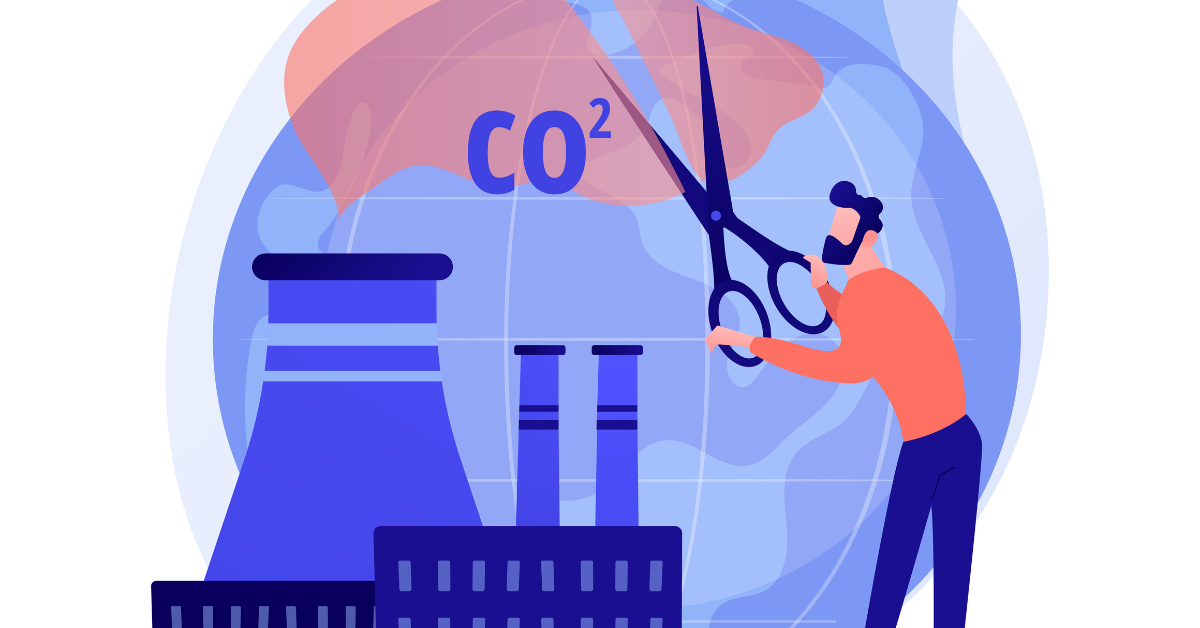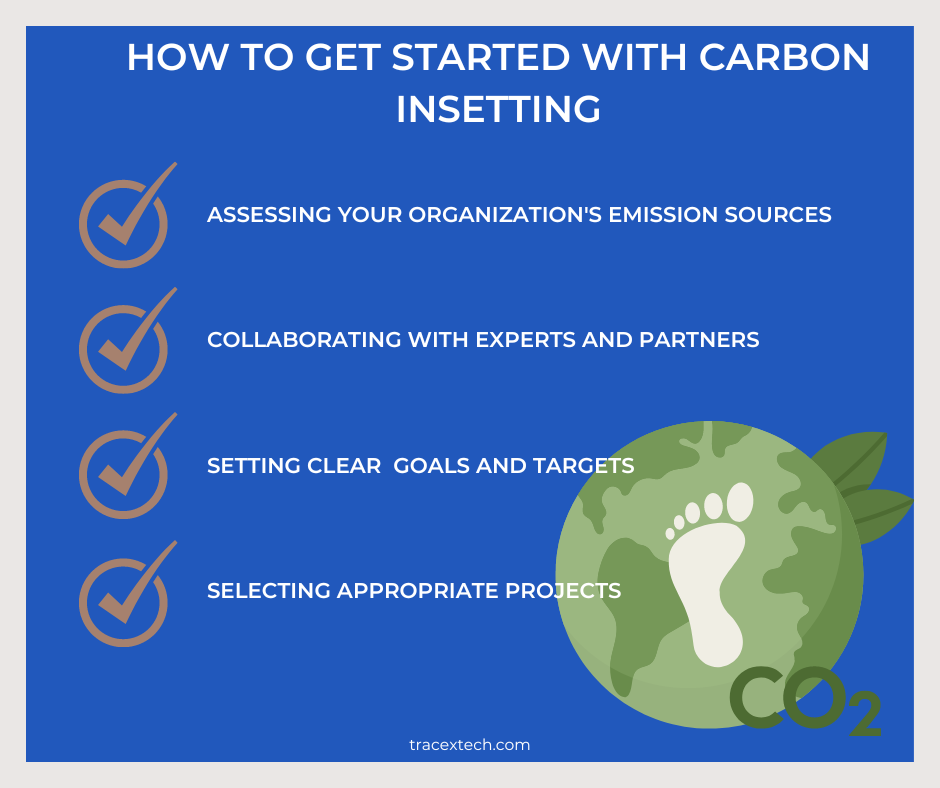Contact: +91 99725 24322 |
Menu
Menu
Quick summary: Discover the ins and outs of carbon insetting in our comprehensive blog post. Explore how this innovative strategy empowers companies to offset emissions by investing in local projects and learn how to effectively implement carbon insetting for a sustainable and impactful approach to climate action.

In a world where the urgency of climate action has never been more pronounced, businesses are increasingly exploring carbon insetting examples to reduce their carbon footprints. Unlike carbon offsetting, which involves compensating for emissions by investing in external projects, carbon insetting focuses on reducing emissions within a company’s own supply chain. This approach not only enhances sustainability but also offers numerous benefits to businesses.
A study by McKinsey & Company found that Carbon Insetting initiatives can result in emission reductions of up to 70 % in certain sectors.
Carbon insetting involves implementing sustainability practices and projects directly within a company’s supply chain to reduce greenhouse gas emissions. This can include efforts such as improving agricultural practices, enhancing energy efficiency, or investing in renewable energy sources. The primary goal is to create a positive environmental impact within the company’s own operations and supply network.
Carbon insetting emerges as a proactive strategy that not only offsets carbon emissions but also creates a transformative impact on their operations and surrounding communities. Carbon insetting examples can be found across various industries, from fashion to food production.
Identifying sources of carbon emissions involves a meticulous assessment of an organization’s operations, supply chain and energy consumption patterns. Companies by pinpointing these emission hotspots can gain insights into where their actions can have the most impact. This helps businesses to set emission reduction strategies.
Once the emission sources are identified, the next would be to implement reduction measures. These measures could include a number of initiatives ranging from sustainable agriculture practices like regenerative agriculture and agroforestry, optimizing energy efficiency and adopting renewable energy sources. The goals is to reduce carbon emissions and promote efficiency and sustainability.
Accuracy is very important in a carbon management strategy. In the carbon insetting process, quantifying the emission reductions is crucial Robust methodologies and data-driven calculations ensure the impact of reduction measures is accurately gauged. This not only fosters transparency but also helps in tracking progress of established goals.
Rather than outsourcing carbon offsetting through external projects, carbon insetting directs investments towards the projects directly connected to the organization’s value chain. Initiatives like reforestation and renewable energy or community development projects creates a positive feedback loop fostering sustainable growth.
Robust Monitoring, Reporting and Verification (MRV) ensures the ongoing efforts of emission reduction measures and associated projects. Maintaining accurate records and transparent reporting helps businesses to uphold accountability, earn stakeholder trust and contribute to a culture of responsible carbon management.
Carbon Management strategies play an important role in the global effort to combat climate change. Among these strategies, Carbon Insetting and Carbon Offsetting both are gaining prominence.
Carbon Offsetting involves compensating of carbon emissions by investing in projects or activities that reduce or remove an equivalent amount of greenhouse gases from the atmosphere. These projects could include activities like reforestation, methane capture and renewable energy generation. Offsetting is carried out by purchasing carbon credits from projects that have undergone rigorous assessment and verification processes. While carbon offsetting has contributed significantly to emission reductions, it has challenges related to its scope and a company’s direct operation.
On the other hand, carbon insetting takes a more localized and integrated approach to emission reduction. It focuses on identifying and addressing emission sources within a company’s own value chain. It involves implementing emission reduction measures directly within a company’s operations leading to a more comprehensive and sustainable impact. This fosters a deeper understanding of a company’s specific emission sources and promotes integration of sustainability into core business processes. It also drives a stronger sense of accountability and ownership.
As companies seek effective ways to reduce carbon footprint, the distinction between carbon insetting and offsetting becomes pivotal. While both approaches contribute to emission reductions, carbon insetting stands out for its holistic and integrated nature, aligning with the evolving landscape of corporate sustainability.
By exploring successful carbon insetting examples, businesses can identify opportunities to reduce their carbon footprint and enhance their sustainability profile.
Carbon insetting encourages companies to evaluate and optimize their supply chains for carbon reduction. By closely working with suppliers and partners to implement emission reduction measures, companies enhance the resilience and sustainability of their supply chains. This leads to enhanced efficiency, reduced risks and improved overall performance.
Carbon insetting projects have a direct and positive impact on local communities. Initiatives like sustainable agriculture, agroforestry and reforestation not only sequester carbon but create employment opportunities, enhance local ecosystems and support biodiversity.
By directly investing in emission reduction projects, companies demonstrate their dedication to carbon neutrality and environmental stewardship. Carbon insetting reinforces corporate responsibility efforts, bolsters brand reputation and aligns with global sustainability frameworks and standards, enhancing the company’s credibility and positive impact.
Carbon insetting provides a pathway for companies to integrate climate action into their core business strategies and values. The advantages extend beyond carbon mitigation, creating a ripple effect of positive outcomes that resonate across communities and supply chains.
Carbon insets address Scope 3 emissions, those that the company indirectly impacts in its own value chain. Scope 3 emissions typically represent the majority of a company’s total greenhouse gas emissions, so reducing them can have a far -reaching impacts on environmental health. The Carbon Insetting projects not only contribute to emission reduction but also promote environmental stewardship, sustainability and community engagement. From sustainable agriculture , agroforestry, reforestation, renewable energy projects to sustainable packaging, carbon insetting examples abound in today’s business landscape.
Sustainable agriculture practices focus on enhancing soil health and carbon sequestration. Practices like cover cropping, reduced tillage and organic farming increase carbon storage in soil, improve water retention and promote ecosystem resilience. These practices not only mitigate carbon emissions but also support food security and rural livelihoods.
Agroforestry integrates trees and crops on farmlands to sequester carbon, improve soil health and provide additional sources of income for farmers.
The agroforestry carbon inset project by Nespresso created carbon sinks by planting trees which helped compensate for the residual carbon emissions that Nespresso could not reduce otherwise.
Reforestation involves planting trees in areas that were previously deforested or degraded contributing to carbon sequestration, habitat restoration and biodiversity enhancement. Afforestation entails creating new forests on land that was not previously forested.
Transitioning to renewable energy sources such as solar, wind, hydroelectric and geothermal power isa powerful way for companies to reduce their reliance on fossil fuels and lower their carbon emissions. Companies can generate clean energy and contribute to overall decarbonization of the energy sector.
Rehabilitating degraded ecosystems like wetlands, grasslands and coastal ecosystems helps to restore natural habitats, sequester carbon, prevent erosion and enhance biodiversity. Conservation efforts protect existing ecosystems, safeguarding their carbon storage potential and ecological functions.
Located in Southern India, Karnataka is home to over 300 hectares of mangrove forest distributed over three coastal regions where over 14 species of fast-growing mangrove trees have been planted to reforest damaged areas.
Each of these carbon insetting projects offer unique benefits and opportunities for companies to align their operations with environmental goals. By carefully selecting and implementing these projects, companies can proactively contribute to carbon reduction while fostering sustainable practices, positive community impact and long-term resilience.

Companies must invest in robust data collection, measurement and reporting mechanisms and foster cross- functional collaboration. DMRV Platform serves as a powerful ally for companies embarking on carbon insetting journeys.
The advanced data collection capabilities enable companies to gather accurate and granular data from various sources across their value chains. Through IoT, remote sensing and data analytics, the platform collects real-time data on carbon sequestration, emissions and other relevant parameters.
The solution provides granular insights into insetting activities at different levels, helping organizations to analyse data and understand the impact of initiatives on carbon reduction and make informed decisions.
The platform generates customizable and comprehensive reports that align with recognized carbon accounting standards. This not only enhances company’s credibility but also streamlines their reporting to stakeholders, regulatory bodies and investors.
The decentralized blockchain platform offers accessibility to the different stakeholders and promotes effective communication, data sharing and collaboration.
DMRV leverages blockchain to provide credibility and transparency of reported emission reductions. The independent validation of results fosters trust among partners and other stakeholders.
The platform enables companies to track progress over time, identify trends and make informed decisions to scale up initiatives and refine strategies for a better impact.
Explore our DMRV Platform
In conclusion, delving into the world of carbon insetting reveals a potent strategy for businesses to not only offset their carbon emissions but also create a meaningful impact on the environment and local communities.
As companies strive to navigate the complex landscape of sustainability and climate action, carbon insetting emerges as a powerful tool that goes beyond traditional carbon offsetting. By reinvesting in projects that directly contribute to emission reduction and align with corporate responsibility goals, organizations can drive positive change at a local level while strengthening supply chains and enhancing resilience. While challenges exist, the benefits of carbon insetting from supporting sustainable agriculture to reforestation offer a compelling pathway towards a greener future.
